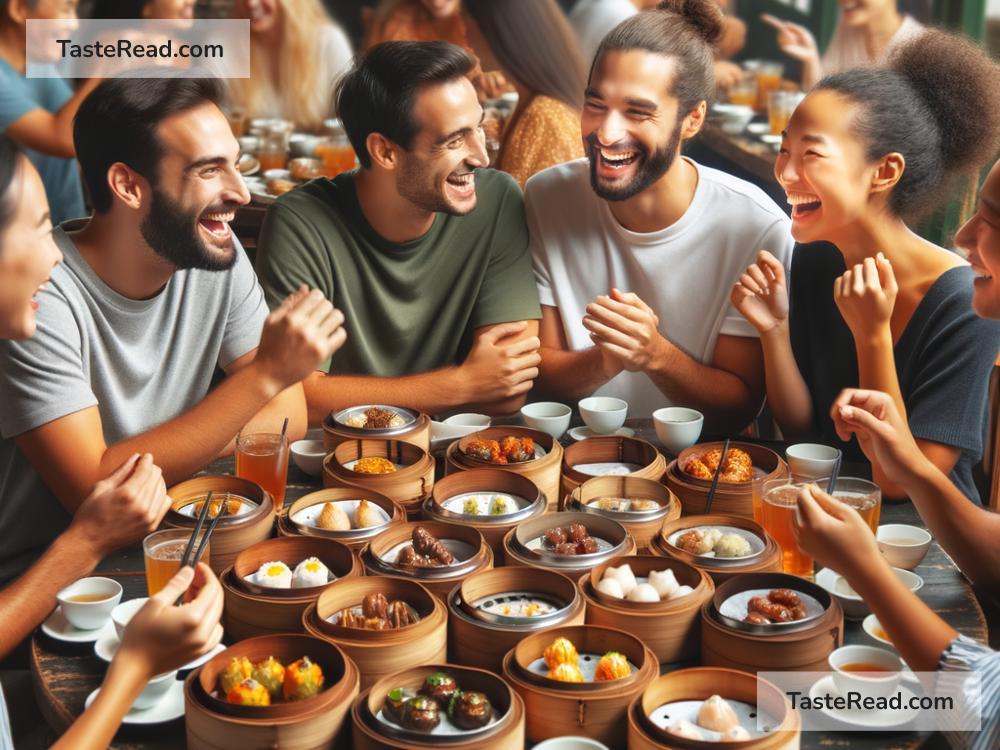Walking into a dim sum restaurant, you’re instantly wrapped in a symphony of sounds: the clinking of ceramic plates, the steam rising with a soft hiss from bamboo baskets, and the lively chatter of diners. This culinary tradition, deeply rooted in Chinese culture, has evolved into a cherished social dining experience. But how did Chinese dim sum transcend its origins to become a global phenomenon celebrated for bringing people together around a table full of bite-sized delights? Let’s unravel the journey of dim sum and its transformation into a social dining tradition.
Dim sum, which literally means “touch the heart,” traces its lineage back to the teahouses along the ancient Silk Road. Travelers and traders, weary from their long journeys, would stop at these teahouses for a much-needed rest and refreshment. Tea was the beverage of choice, believed to aid in digestion and refresh the soul. Over time, these teahouses began serving small snacks to complement the tea, laying the foundation for what would evolve into dim sum.
The practice of enjoying these bite-sized treats with tea became known as “yum cha,” which translates to “drink tea.” It was in the bustling city of Guangzhou, in the Cantonese-speaking southern part of China, that dim sum truly flourished. The Cantonese transformed yum cha from a rest stop ritual into a vibrant dining experience, encompassing a wide array of dishes including dumplings, buns, rolls, and pastries.
What makes dim sum unique is not just the variety of dishes but also the way they are served. Traditionally, dim sum items are carted around the restaurant, allowing diners to select their preferred dishes from the moving feast before them. This interactive dining format adds an element of surprise and excitement, encouraging conversation and communal decision-making as plates are chosen and shared among the table.
The social aspect of dim sum dining cannot be overstated. It is a meal meant for leisurely enjoyment, where time slows down, and the focus is on the collective experience. Families and friends gather around the table, sharing dishes and stories, making dim sum an integral part of celebrations and casual meetups alike. It’s a time for grandparents, parents, and children to reconnect, for friends to catch up, and for relationships to be nurtured.
As Chinese immigrants brought their culinary traditions to different parts of the world, dim sum found a new home in various countries, adapting to local tastes while retaining its essence. In every corner of the globe, the practice of sharing these small dishes has resonated with the universal human desire for connection. Dim sum restaurants, ranging from simple eateries to luxurious banquet halls, have become venues for cultural exchange, where people of diverse backgrounds come together over a shared meal.
The digitization of the modern world has given dim sum an additional role: a break from the screen, an oasis of human interaction in the desert of digital communication. In a time when meals are often rushed, and conversations are abbreviated to text messages, dim sum offers a remedy. It is a reminder of the joy found in real-life connections, in the act of coming together to share not just food, but time and presence.
Looking forward, the tradition of dim sum is set to continue evolving. Chefs around the world are experimenting with new ingredients and techniques, blending tradition with innovation. Vegan and vegetarian options are becoming more common, catering to the growing demand for plant-based diets. Yet, the essence of dim sum as a social dining experience remains unchanged. It continues to be a time-honored tradition that celebrates the simple yet profound pleasure of sharing a meal with others.
In conclusion, dim sum represents much more than just a culinary tradition; it is a celebration of togetherness, of the shared joy that food can bring to our lives. From its origins along the Silk Road to its present status as a beloved worldwide practice, dim sum has proven that food has the power to touch hearts and bring people together. So, the next time you find yourself at a dim sum table, take a moment to appreciate not just the delicious bites on your plate but the company around you. After all, it’s the shared laughter, conversations, and connections that truly define the dim sum experience.


